 资源简介
资源简介
(共70张PPT)
第七章 呼吸系统疾病
Section 2 COPD
Chronic Obstructive Pulmonary Disease
Chronic Obstructive Pulmonary Disease
不可逆气道阻塞 Irreversible airflow obstruction
呼气阻力增加
肺功能不全
与空气污染和吸烟有关 Strongly correlated with air pollution and smoking
男多于女 More common in men than in women
COPD:a growing global public health problem.
In one population based study conducted at multiple international sites, approximately 10% of participants 40 years of age or older were found to have airflow obstruction of at least moderate severity according to spirometric criteria.
( Buist AS, McBurnie MA, Vollmer WM, et al. International variation in the prevalence of COPD (the BOLD Study): a population- based prevalence study. Lancet 2007;370:741-50. )
我国国家“十五”课题最新统计数据(2005年公布)显示40岁以上人口COPD患病率为8%。估计全国有2500万人罹患此病,每年因COPD死亡的人数达100万,致残人数达500~1000万,COPD居我国疾病负担的首位。
The major diffuse obstructive disorders
慢支 Chronic Bronchitis
肺气肿 Emphysema
Bronchiectasis
Asthma
一、慢支 Chronic bronchitis
Clinical diagnostic criteria
慢性咳嗽、咳痰
每年3个月
连续2年
Chronic bronchitis is common among cigarette smokers and urban dwellers in smog-ridden cities;
some studies of men in the 40- to 65-year age group indicate that 20% to 25% have the disease.
Chronic bronchitis
Endoscopic image
The distinctive feature of chronic bronchitis is hypersecretion of mucus
感染
吸烟\气候\空气污染等
大气道病变 Large airway disease
咳嗽、咳痰 Cough and sputum production
Histological changes
杯状细胞数量增加 increased numbers of goblet cells in the epithelium
粘液腺数量增加 increased volume of the submucosal mucus glands
慢性炎症 a component of chronic inflammation
Reid index
inner perichondrium
basal lamina
小气道病变 Small airway disease
呼气性呼吸困难 Decrease in maximum forced expiratory flow
Histological changes
杯状细胞数量增加 presence of goblet cells in the lining epithelium
慢性炎症 a component of chronic inflammation
起始于大支气管累及小 、细支气管
① 粘膜上皮的损伤和修复
纤毛倒伏、脱失
上皮细胞变性、坏死脱落,可鳞化
上皮再生,杯状细胞大量增生 ( 4 ~ 5 :1 2 :1 )
慢性非特异性炎
② 腺体变化
粘液腺肥大、增生
浆液腺化生为粘液腺
③ 管壁病变
充血、水肿,炎细胞浸润
平滑肌束断裂,软骨变性萎缩
小细支气管炎
晚期
病变向小支气管和细支气管及管壁周围组织扩展,形成细支气管周围炎;管壁增厚管腔闭塞
支气管粘膜炎症、粘液分泌旺盛
咳
痰
支气管痉挛,渗出物阻塞
喘
晚期表现 Late stage menifestation
血氧饱和度低 insufficient oxygenation of blood (hypoxemia)
呼吸困难 labored breathing (hypoventilation)
右心衰 right-sided heart failure (cor pulmonale)
Treatment
不能根治 No cure
控制症状 relieving symptoms
防止并发症 preventing complications
SUMMARY for Chronic Bronchitis
Chronic bronchitis is defined as
persistent productive cough for at least 3 consecutive months in at least 2 consecutive years.
Cigarette smoking is the most important underlying risk factor; air pollutants also contribute.
Chronic obstructive component largely results from small airway disease (chronic bronchiolitis) and coexistent emphysema.
Histology demonstrates enlargement of mucus-secreting glands, goblet cell metaplasia, and bronchiolar wall fibrosis.
二、肺气肿 Pulmonary Emphysema
呼吸性细支气管至肺泡的末梢肺组织因持续性含气量增加而呈过度膨胀,伴有肺泡壁弹力组织破坏,间隔断裂致肺泡互相融合,肺容积胀大的病理状态。
Abnormal permanent enlargement of airspaces distal to the terminal bronchiole, accompanied by the destruction of their walls. (morphologically defined)
Inadequate ventilation
Less perfusion
Narrowed bronchiole
蛋白酶和抗蛋白酶水平失衡 Imbalance between proteases and anti-proteases (alpha-1 antitrypsin) in the lung
Cigarette smoking
募集粒细胞和巨噬细胞 Recruits neutrophils and macrophages
氧自由基抑制抗胰蛋白酶 Oxidants and free radicals inhibit the alpha-1-antitrypsin circulating in the lung
慢支和反复感染 Chronic bronchitis and repeated infections
缺乏 Alpha-1 antitrypsin (1%)
Who destroy the alveoli wall
肺气肿类型 Types of emphysema
腺泡中央型肺气肿 Centriacinar emphysema
常见
主要累及部位 respiratory bronchiole
上叶更常见
见于吸烟者
肺气肿类型 Types of emphysema
全腺泡型肺气肿 Panacinar emphysema
累及整个腺泡
下叶常见
1/20 as common as centriacinar emphysema.
Seen in alpha-1-antitrypsin deficiency
腺泡周围型肺气肿 Periacinar emphysema
远端 The distal respiratory acinus is expanded
主要部位:上叶近胸膜或隔旁
肺气肿类型 Types of emphysema
Centriacinar emphysema
Centriacinar emphysema in which there are "dirty holes" that appear focally where the central portions of lung acini have lost lung parenchyma while collecting anthracotic pigment at the same time.
Centriacinar emphysema
Emphysema
loss of alveolar walls
其它
瘢痕旁肺气肿 Emphysema with irregular distribution
related to scars (obstruction / traction)
代偿性肺气肿 Compensatory emphysema
Caused by removal or collapse of adjacent pulmonary parenchyma
肺大泡 bullae lung
肺尖、胸膜下局灶性肺泡间隔破坏,形成 > 2cm (D) 囊泡
间质性肺气肿
儿童多见 ,肺泡壁、细支气管壁急性破裂 ,
空气进入肺间质
Numerous large bullae apparent on the surface of the lungs in a patient dying with emphysema.
临床病理联系 Late stage manifestation
气短 Short of breath, wheezling
咳嗽 Cough with or without mucous
疲劳 Fatigue
Weight loss
下肢水肿 Ankle feet leg swelling
肺感染 lung infections
Complications
Respiratory infections
Respiratory failure
Cor pulmanale
Summary for Emphysema
Emphysema is a chronic obstructive airway disease characterized by
permanent enlargement of airspaces distal to terminal bronchioles.
Subtypes include centriacinar (most common; smoking related), panacinar (seen in α1-antitrypsin deficiency), distal acinar, and irregular.
The two key pathogenic mechanisms are an excess of cellular proteases with low antiprotease levels (protease-antiprotease imbalance), and an excess of reactive oxygen species (oxidant-antioxidant imbalance). The accumulated inflammatory cells are the source of proteases and oxidants; together, they cause tissue injury and inactivate antiproteases.
Most individuals with emphysema demonstrate elements of chronic bronchitis concurrently, since cigarette smoking is an underlying risk factor for both; individuals with pure emphysema are characterized as "pink puffers."
blue bloaters
pink puffers
A 67-year-old man presents with a history of dyspnea, which has progressed for the past several years. He began smoking cigarettes at 15 years of age and continues to smoke one pack per day. Worsening breathlessness forced him to retire as a laborer, and he has sought emergency care for what he calls bronchitis twice in the past year.
His physical examination is notable for diminished breath sounds on auscultation, with a prolonged expiratory phase. Spirometry reveals severe airflow obstruction.
三、支气管哮喘 Bronchial asthma
呼吸道过敏反应而引起的一种以发作性、可逆性支气管痉挛为特征的慢性支气管炎性疾病。
临床表现:反复发作、伴有哮鸣音的呼气性呼吸困难、咳嗽、胸闷
外源性支气管哮喘(Extrinsic asthma): I 型变态反应,吸入过敏原,多见于儿童。 About 70% of cases are said to be "extrinsic" are due to IgE and TH2-mediated immune responses to environmental antigens.
内源性支气管哮喘(Intrinsic asthma): 呼吸道感染、寒冷、锻炼、紧张、吸入刺激物、药物等导致哮喘发作,成人多见。 In the remaining 30% of patients, asthma is said to be "intrinsic" is triggered by non-immune stimuli such as aspirin; pulmonary infections, especially those caused by viruses; cold; psychological stress; exercise; and inhaled irritants.
What are the 4 classical histologic findings in bronchial asthma
支气管腔充满粘液,粘膜下层平滑肌肥大、水肿、炎症。 (mainly eosinophils).
大量的嗜酸性粒细胞
This clinical picture is the triad of
阵发性 可逆性气道阻塞 intermittent and reversible airway obstruction
慢性气道炎症(嗜酸粒细胞)chronic bronchial inflammation with eosinophils,
起到平滑肌肥大和高反应性 bronchial smooth muscle cell hypertrophy and hyperreactivity.
SUMMARY for Asthma
Asthma is characterized by
reversible bronchoconstriction caused by airway hyper-responsiveness to a variety of stimuli.
Atopic asthma变应性哮喘 is caused by a TH2 and IgE-mediated immunologic reaction to environmental allergens and is characterized by acute (immediate) and late-phase reactions.
The TH2 cytokines IL-4, IL-5, and IL-13 are important mediators.
Triggers for non-atopic asthma are less clear but include viral infections and inhaled air pollutants.
Eosinophils are key inflammatory cells found in all subtypes of asthma; eosinophil products such as major basic protein are responsible for airway damage.
Airway remodeling (basement membrane thickening and hypertrophy of bronchial smooth muscle) adds to the element of obstructive disease.
四、 支气管扩张 Bronchiectasis
肺内小支气管的持久性扩张为特征的慢性呼吸道疾病。
管内分泌物潴留继发化脓性炎。---咳嗽、大量脓痰、咯血
Bronchiectasis is the permanent dilation of bronchi and bronchioles caused by destruction of the muscle and elastic supporting tissue, resulting from or associated with chronic necrotizing infections. It is not a primary disease but rather is secondary to persisting infection or obstruction caused by a variety of conditions.
Pathogenesis
支气管阻塞 Bronchial obstruction
Common causes are tumors, foreign bodies, and occasionally impaction of mucus. Under these conditions, the bronchiectasis is localized to the obstructed lung segment.
慢性持续感染 Chronic persistent infection
Necrotizing, or suppurative, pneumonia
particularly with virulent organisms such as Staphylococcus aureus or Klebsiella spp., may predispose to bronchiectasis.
In the past, postinfective bronchiectasis was sometimes a sequel to the childhood pneumonias that complicated measles, whooping cough, and influenza, but this has substantially decreased with the advent of successful immunization.
Post-tubercular bronchiectasis continues to be a significant cause of morbidity in endemic areas.
病变支气管圆柱状或囊状扩张
左下叶多见
管腔内常有脓
BRONCHIECTASIS
反复炎症导致瘢痕形成,在肺叶之间造成粘连。
扩张的支气管,支气管壁结构不清楚,发生了坏死性炎症。
临床病理联系 Clinical symptoms :
咳嗽、大量脓痰 由粘膜化脓性炎症刺激
2. 咯血 是支气管炎症破坏血管。
3. 胸痛 炎症累及胸膜
4. 肺脓肿、脓气胸、脑脓肿
5. 晚期可引起肺心病。
Clinical Course
咳嗽 大量脓痰
severe, persistent cough with expectoration of mucopurulent, sometimes fetid恶臭的, sputum.
The sputum may contain flecks of blood; frank hemoptysis can occur.
杵状指 Clubbing of the fingers may develop.
严重者出现低氧血症 高碳酸血症 肺心病
In cases of severe, widespread bronchiectasis, significant obstructive ventilatory defects develop, with hypoxemia, hypercapnia, pulmonary hypertension, and (rarely) cor pulmonale.
Table1. Disorders Associated with Airflow Obstruction: The Spectrum of Chronic Obstructive Pulmonary Disease
Clinical Term Anatomic Site Major Pathologic Changes Etiology Signs/Symptoms
Chronic bronchitis Bronchus Mucus gland hyperplasia, hypersecretion Tobacco smoke, air pollutants Cough, sputum production
Bronchiectasis Bronchus Airway dilation and scarring Persistent or severe infections Cough, purulent sputum, fever
Asthma Bronchus Smooth muscle hyperplasia, excessive mucus, inflammation Immunologic or undefined causes Episodic wheezing, cough, dyspnea
Emphysema Acinus Airspace enlargement, wall destruction Tobacco smoke, air pollutants Dyspnea
Small airway disease, bronchiolitis Bronchiole Inflammatory scarring,
obliteration of bronchioles
Tobacco Smoke Cough, dyspnea
患者,女性,60岁。因反复咳嗽、咳痰11年,伴气促、心悸3年,下肢水肿2年,腹胀3月入院。11年前感冒后发热、咳嗽、咳脓痰。以后每逢冬春季常咳嗽、咳白色泡沫痰,有时为脓痰,反复加重。3年来,在劳动或爬坡后常感心悸、呼吸困难。2年前开始反复下肢凹陷性水肿。3月前受凉后发热、咳嗽加重,咳脓痰,心悸气促加剧并出现腹胀,不能平卧,急诊入院。
病例分析
体格检查:
体温37.4℃,脉搏98次/min,呼吸28次/min,血压102/79mmHg。慢性病容,端坐呼吸,嗜睡,唇及皮肤明显发绀,颈静脉怒张,吸气时胸骨及锁骨上窝明显凹陷,桶状胸,呼吸动度降低,叩诊呈过清音,双肺散在干湿啰音。心率98次/min,心律齐,心浊音界缩小。腹部膨隆,大量腹水征,肝在肋下7.5cm,较硬,双下肢凹陷性水肿。
实验室检查:
血常规:血红蛋白98g/L,白细胞6.7×109/L,其中嗜中性粒细胞占0.89,淋巴细胞0.11。入院后病人突然抽搐,极度烦躁不安,继之神志不清,心率增到156次/min,抢救无效死亡。
1.根据主要临床表现作出诊断,并说明诊断依据。
尸检摘要
左右胸腔积液各200m1,腹腔积液2000ml呈淡黄色,透明,比重1.012。双肺各重750g,体积增大,极度充气膨胀,切面见双肺散在灶性实变,呈灰白色,部分呈灰白与暗红相间,且以双肺下叶为甚。镜下见双肺末稍肺组织过度充气、扩张,肺泡壁变薄、部分壁断裂;灶性实变区见充血,肺泡内及细支气管腔内有浆液、嗜中性粒细胞充填,部分上皮细胞坏死脱落;
支气管黏膜上皮内杯状细胞增多,部分鳞状上皮化生,个别管腔内见黏液或渗出物形成的栓子,管壁黏液腺增多并肥大,管壁软骨灶性钙化及纤维化,纤维组织增生,淋巴细胞和少量嗜中性粒细胞浸润。心脏重300g,右心室壁厚0.35cm,右心腔明显扩张,肉柱及乳头肌增粗变扁,肺动脉圆锥膨隆,左心及各瓣膜未见明显病变。心源性肝硬化。其他脏器变性、淤血。
2.说明该患者的疾病的发生发展过程。 3.请用尸检发现解释患者的症状和体征。
咳嗽、咳痰,脓痰,劳动后心悸呼吸困难,下肢凹陷性水肿,腹胀
端坐呼吸,嗜睡,唇及皮肤发绀,颈静脉怒张,吸气时胸骨及锁骨上窝凹陷,桶状胸,双肺散在干湿啰音,大量腹水征, 肝大、较硬
展开更多......
收起↑
 资源预览
资源预览
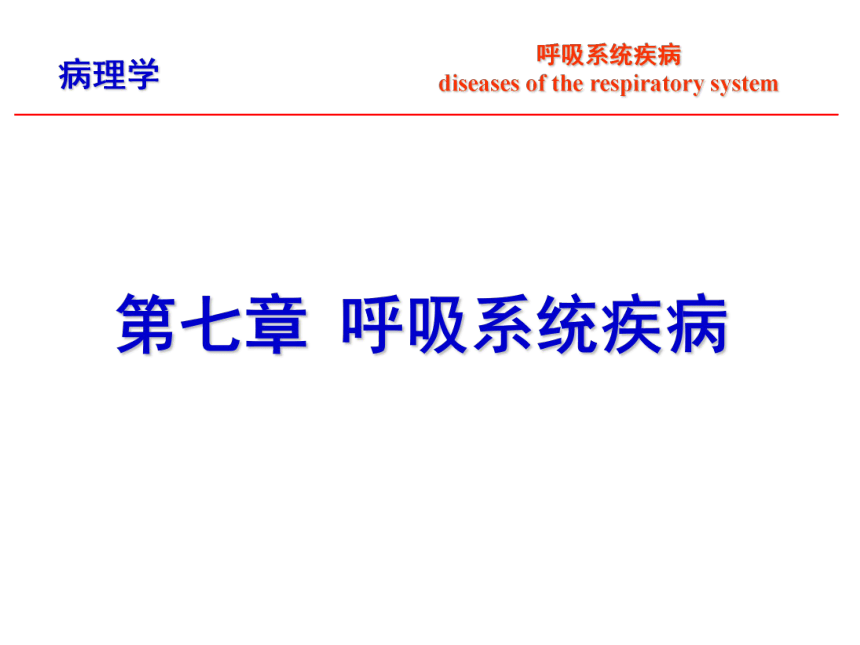
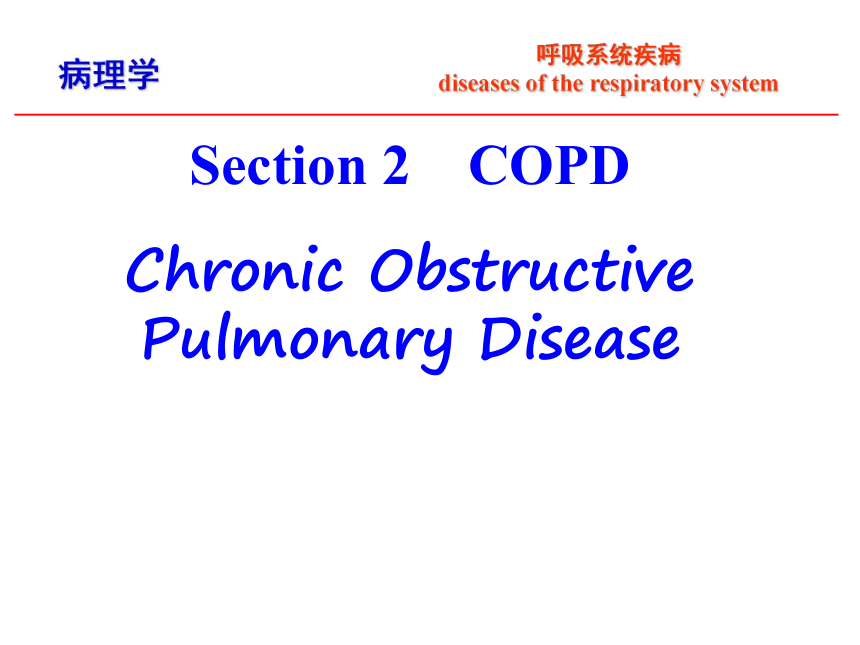
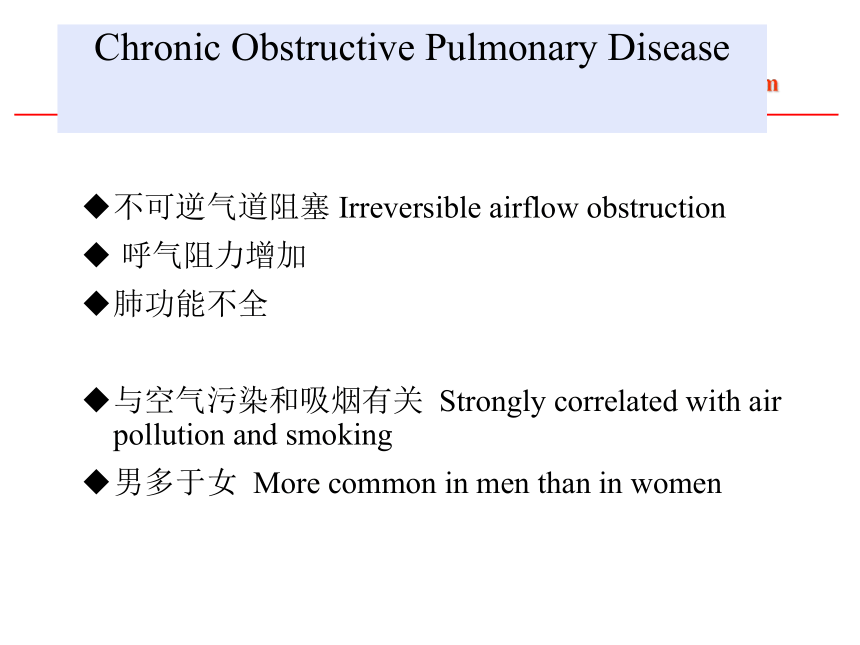
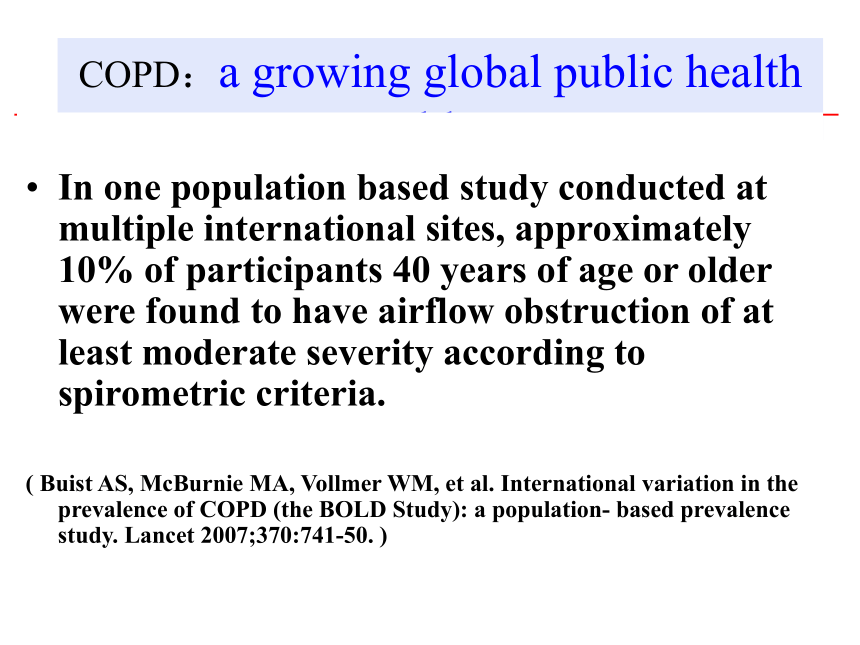
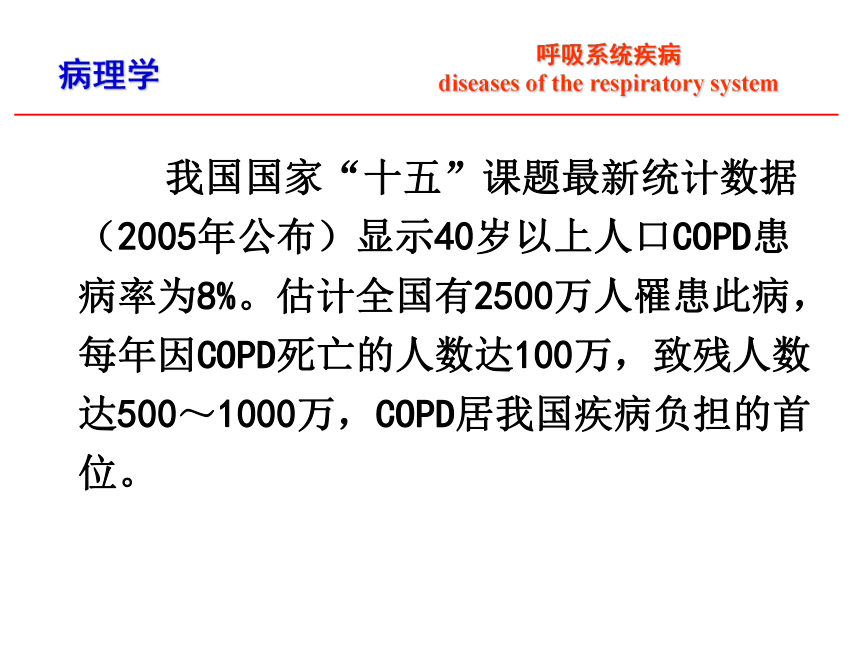
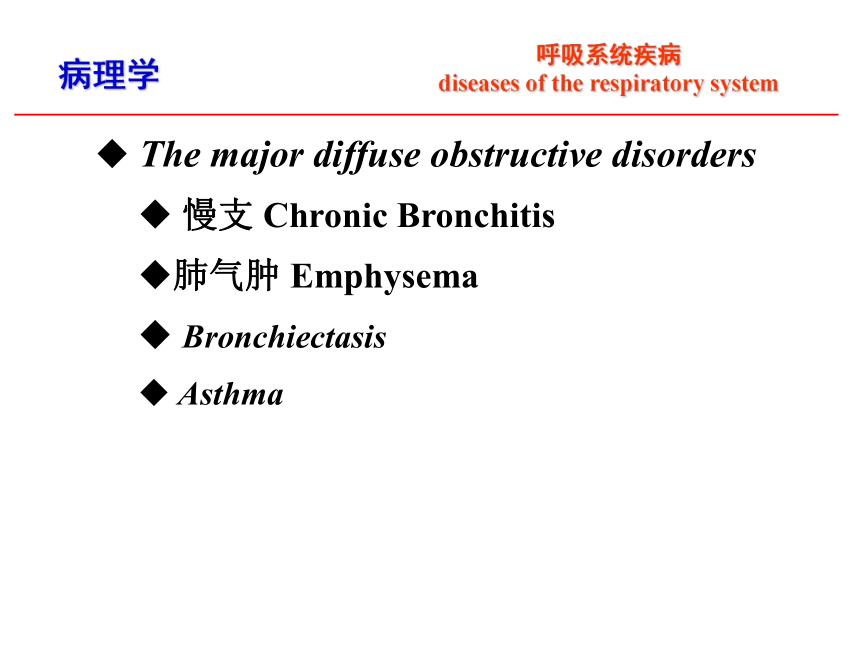
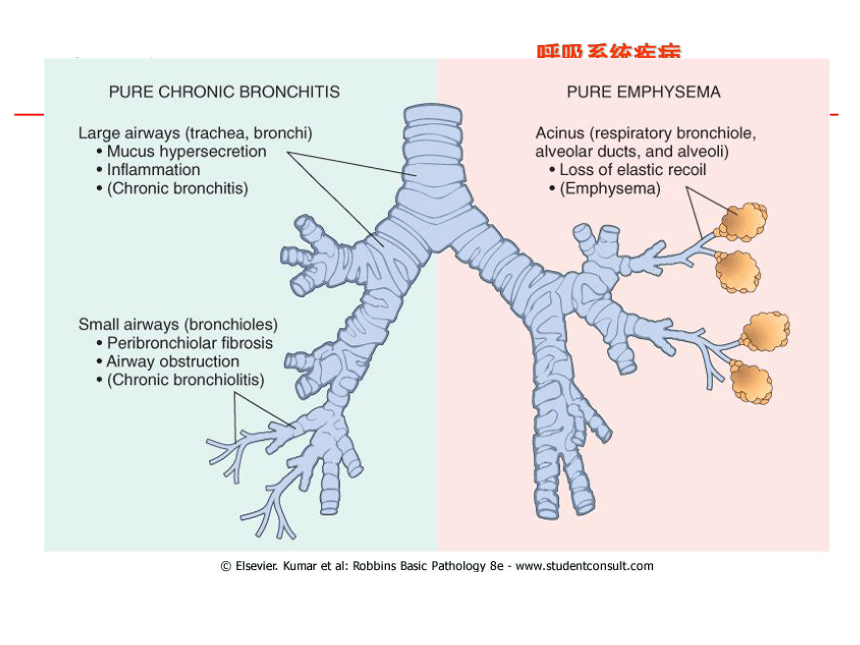
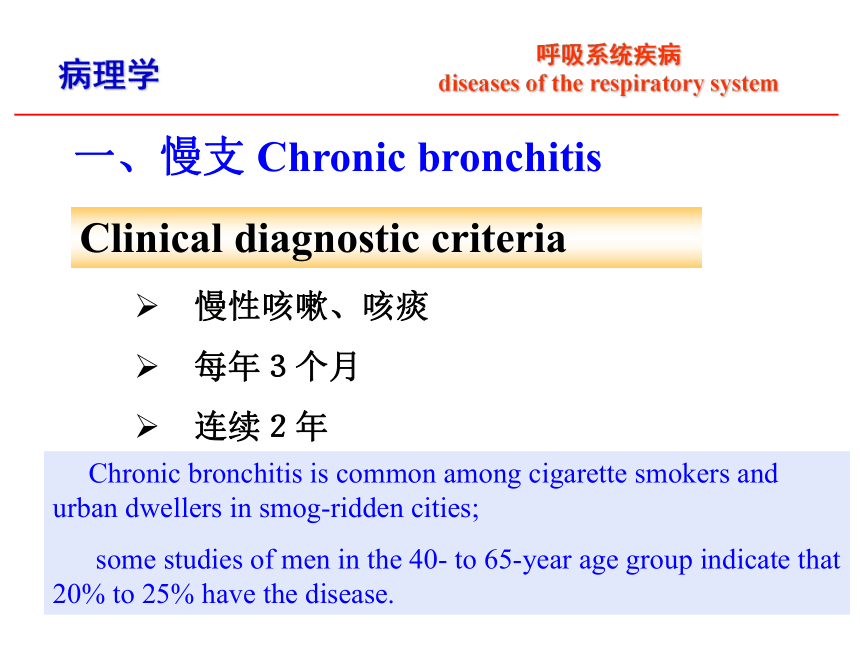
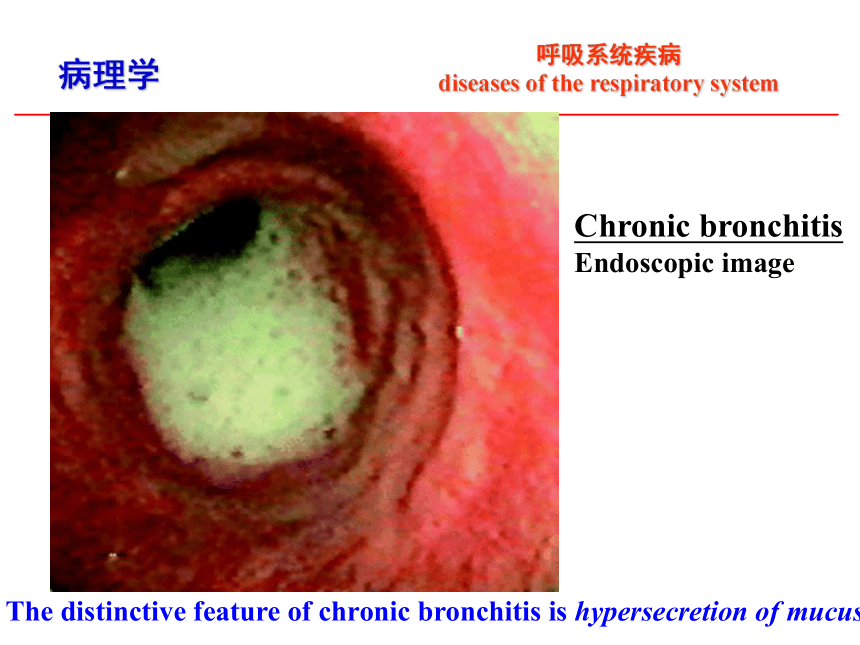
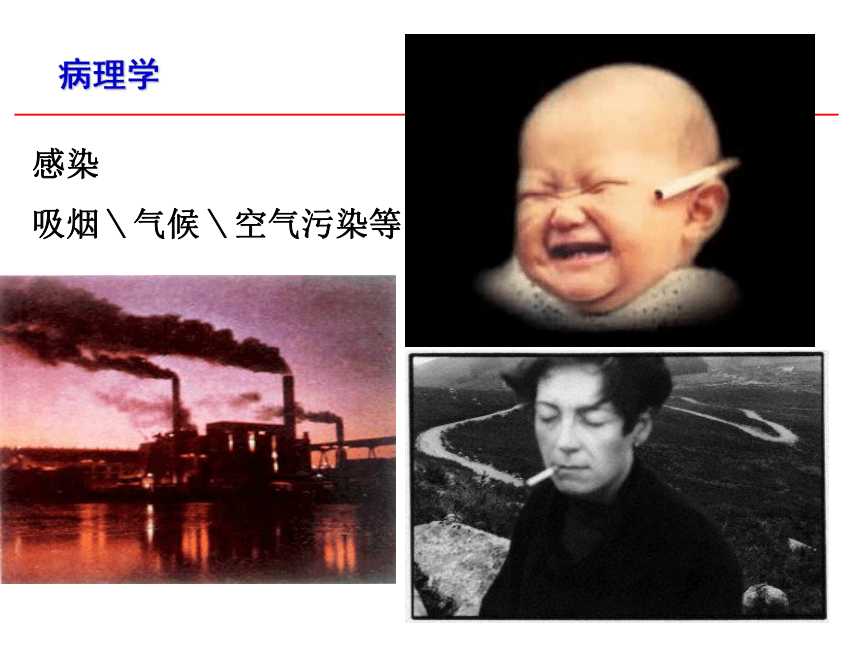
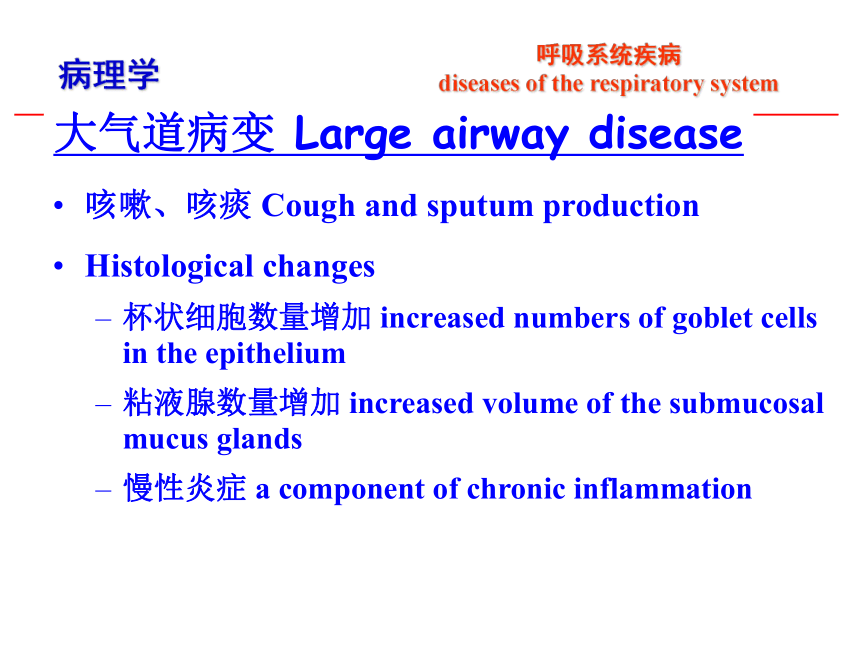
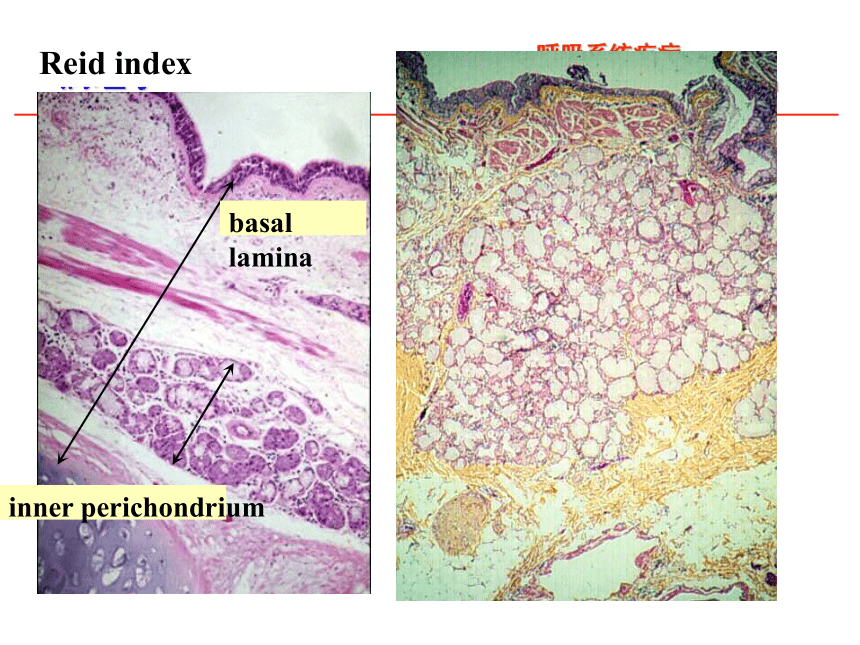
 资源预览
资源预览











